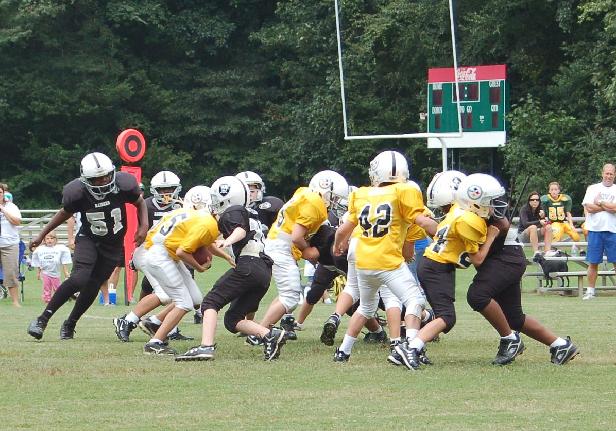

His view is it turns bad kicks into decent kicks, with over-hit punts that dribble over the whitewash being rewarded, with a goal-line kick the outcome rather than the old 22 drop out. The consequences: I was contacted by a Welsh club player who experienced this new law last weekend.

In essence, they seem keen on reducing the amount of forward pick-and-go attacks near the line which have become so prevalent, while also wanting to speed up the game. An opportunity for counter attack is also created. The aim: To encourage variety in attacking play close to the goal line and to increase ball-in-play time by replacing a scrum with a kick that must be taken without delay. How it works: If the ball is held up over the try-line or there is a knock-on from an attacking player in-goal or an attacking kick is grounded by the defenders behind their try-line, then play restarts with a goal line drop-out anywhere along the goal line. It will be fascinating to see whether the new law actually leads to more or less kicking. That certainly seems to be hope of the powers-that-be. In theory, that in turn should create gaps out wide for attacking teams to exploit, with fewer numbers in the defensive line. With Wales, for example, that might mean someone like the fit-again Gareth Anscombe at 15 or the young Ben Thomas at 12.įrom a defensive perspective, teams will clearly have to consider adapting their defensive strategy, dropping wings back to cover the touchlines. You could see a second outside-half employed either at full-back or inside centre to strengthen the kicking armoury. The consequences: From an attacking perspective, it could prove a really effective weapon, setting up close range lineouts on your own throw, an area from which so many tries stem via driving mauls.Īs such, one wonders whether teams will look to select two specialist kickers in their back-line to fully exploit the new law. It has already been trialled across Super Rugby AU.

The aim: The primary intention is to encourage the defensive team to put more players in the back-field, covering the 50:22 kick, thereby creating more attacking space and reducing defensive line speed. The phase must originate inside the kicking team’s own half. The ball can not be passed or carried back over half way for the 50:22 to be played. How it works: If the team in possession kicks the ball from inside their own half and it bounces into touch inside their opponents’ 22, they will get the throw into the resultant lineout. Here then are all the changes outlined and examined.

That tournament will also see a radical new red card rule in operation. Read more: Jonathan Davies demands World Rugby make immediate rule changes They will all be in place when the Rugby Championship gets underway this weekend, with New Zealand hosting Australia and South Africa taking on Argentina.
#Flying wedge football influence series
The last paragraph is mine.There’s a new look to the game of rugby amid a series of radical changes that we are going to have to get used to over the coming weeks and months.Ī series of new laws are to be trialled worldwide for the next 12 months and they are set to have a significant impact on the way the game is played at both international and domestic level. (BTW, the first part of this summary was generated by ChatGPT from the script I used to create the video. It’s very possible that football will cease to exist. The rules aren’t unified between the schools. Critics like Harvard President Charles Eliot wanted football abolished while Walter Camp, the father of American football, put out a propaganda book defending the sport. It was under attack because of its brutality and because people didn’t like the mass plays. Finally, the video points out that despite the still photo of the flying wedge appearing to be goofy, it was a formidable play when executed in motion.Īt the end of 1894, football was in chaos. The video also mentions how the introduction of these plays led to the formal establishment of blocking rules, disregarding the “offsides” play. The video explains how men were moving before the ball was put in play or snapped, as there were no rules that stated players had to be set on the line.


 0 kommentar(er)
0 kommentar(er)
